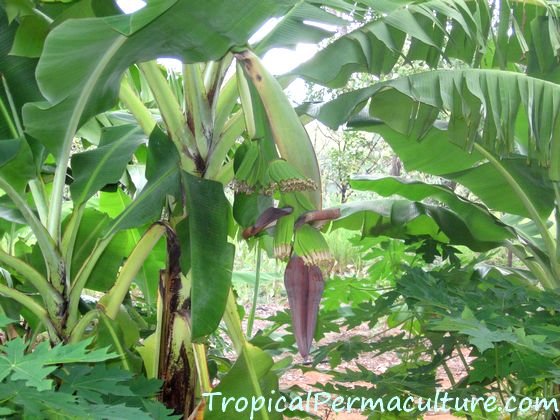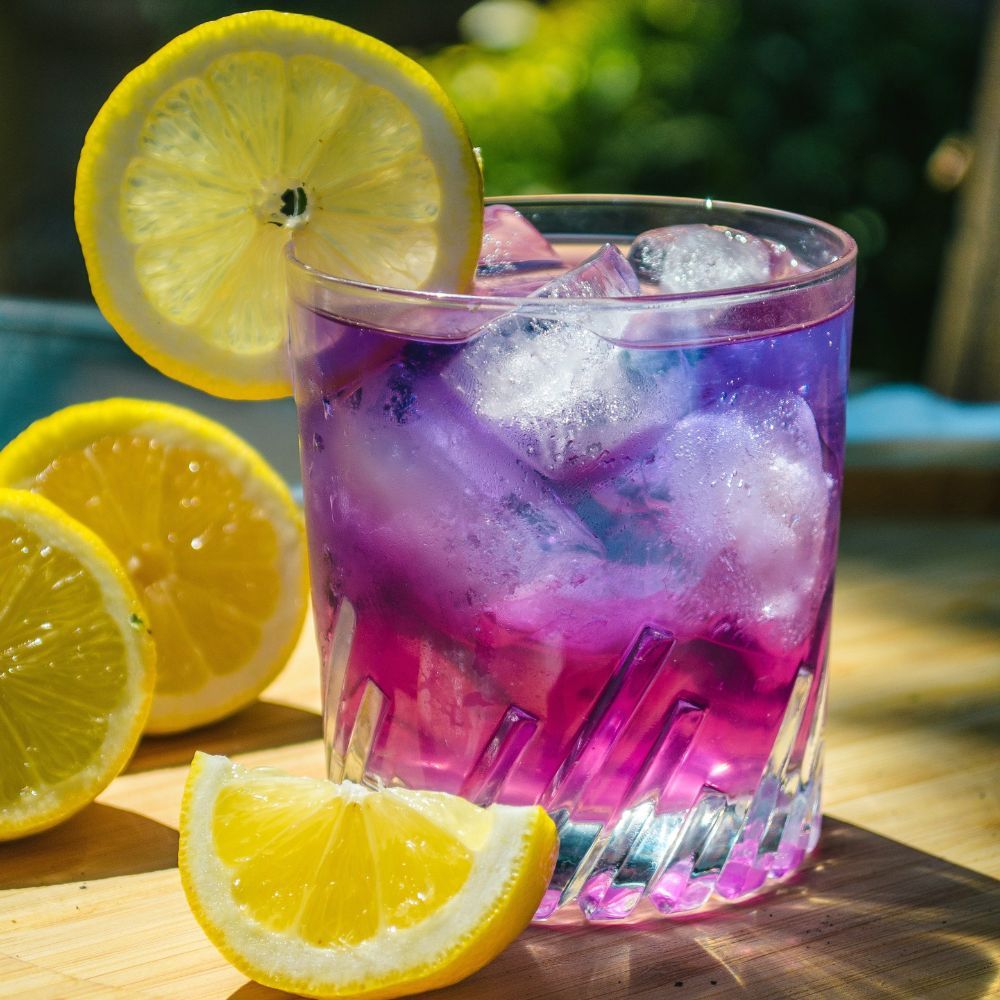Grow Happy & Healthy Banana Plants: Your Ultimate Fun Guide!

Banana Plant Mastery: The Problem-Solver’s Step-by-Step Progression from Novice to Expert
Banana growing isn’t just a gardening project—it’s a living experiment in patience, problem-solving, and tropical tenacity. If you’re tired of the same old advice (“plant in sun, water often”), you’re about to get the real-world, tested blueprint I wish I’d had when I started. This isn’t theory—these are the tactics, tools, and troubleshooting methods that separate frustrated beginners from backyard banana legends.

Let’s map your journey from rookie mistakes to expert-level harvests—bananas included.
1. Banana Plant Basics: Why Most Guides Get It Wrong
Most people think bananas are trees. They aren’t—they’re colossal herbs with underground power centers (the rhizomes). That means everything above ground is temporary; what matters most is what’s happening below your mulch line.
Key starter facts no one tells you:
- Bananas can double their leaf count in under a month if happy.
- Their “trunks” snap like celery after storms if left unsupported.
- Your first planting will likely flop unless you nail drainage and wind protection.
- Each stem fruits once—then dies. The art is managing the replacement cycle.
My first banana patch?
I planted five suckers…lost three to rot after our clay soil turned swampy overnight. Lesson learned: bananas don’t forgive soggy roots. But from that failure came my rule #1...
2. Beginner Stage: Laying Solid Foundations
A. Start With The Right Variety (Don’t Just Grab What’s Cheap)
The biggest beginner mistake? Choosing whatever’s at the big-box store—often mislabeled or disease-prone.
Instead, ask yourself:
- What’s my coldest winter night? If it dips below 28°F (-2°C), skip classic Cavendish.
- How much space do I have? Full-sized plants need 8–12 feet between clumps.
- Do I want fruit or foliage? Ornamental dwarfs rarely set edible fruit indoors.
Tested winners for different scenarios:
- Tight patios/indoors: ‘Super Dwarf Cavendish’, ‘Double Mahoi’
- Marginal climates (down to 20°F): ‘Blue Java’ (Ice Cream), ‘Dwarf Orinoco’
- Classic flavor/large bunches: ‘Rajapuri’, ‘Goldfinger’
In my own suburban trial patch, ‘Dwarf Orinoco’ outpaced every other variety for cold recovery—and shrugged off two hailstorms with only minor leaf tattering.
If you're still not sure which variety fits your location, check out our guide to choosing the right banana plant variety for your climate for more tailored advice.
B. Soil Prep Like An Engineer
Here’s where most guides fail you—they say “rich soil” but not how rich or how deep. Here’s my formula:
- Dig a hole at least 30" wide and 18" deep (use a post-hole digger if you’re breaking new ground).
- Mix equal parts native soil, coarse sand/perlite for drainage, and composted manure for nutrition.
- For clay soils, mound up at least 12" above grade; bananas hate puddles more than droughts.
- Add a cup of rock phosphate and half-cup greensand per plant for long-term minerals.
Sensory Check: When you squeeze the amended soil in your fist, it should crumble—not stick together or drip water.
For more in-depth soil and feeding strategies, see Essential Soil and Fertilizer Tips for Healthy Banana Plants.
C. Planting Techniques That Prevent Root Rot
Forget “dig hole, drop plant”—here’s why depth matters:
- Set suckers so their base is level with surrounding soil—not buried deeper.
- For corms/rhizomes, lay horizontally and cover with just an inch of soil until sprouting starts.
Failed attempt confession:
I once buried a pup too deep trying to “anchor” it against wind—it never sent up leaves again because the crown rotted before roots could establish!
If you want a detailed walkthrough from start to finish, check out our step-by-step guide to planting banana trees in your garden.
3. Intermediate Skills: Keeping Growth Relentless
A. Watering Without Drowning—My Weekly Formula
Bananas need consistent moisture but despise standing water around roots.
Here’s my schedule for typical summer conditions:
- Year one: Water deeply every other day (5 gallons per plant), adjust for rainfall
- Once established: Deep soak twice weekly; mulch keeps topsoil moist
Unexpected twist:
If leaves start curling inward at midday—even when soil feels damp—you may be dealing with salt buildup or root stress rather than drought! Flush thoroughly with plain water every few weeks if using tap or synthetic fertilizers.
For more tips on efficient watering and irrigation, visit Watering and Irrigation Best Practices for Banana Plant Growth.
B. Fertilizing for Explosive Leaf Growth
Forget monthly granules alone—you’ll see turbocharged results by layering feedings:
- At planting & every spring: Top-dress with two shovelfuls of composted chicken manure
- Liquid seaweed/fish emulsion foliar spray every two weeks during rapid growth
- Switch to high-potassium fertilizer as soon as flower bud (“bell”) emerges—this maximizes fruit size/sweetness
In field trials here in zone 9a (Houston area), switching to potassium-rich feeds tripled average bunch weight compared to all-purpose NPK alone!
C. Wind & Cold Protection Hacks
Banana leaves shred like tissue in strong winds—but here’s what works:
- Erect temporary fencing/windbreaks using old pallets or snow fencing on the storm side
- Stake any pseudostems over six feet tall during fruit development
For cold snaps:
- Pile mulch knee-deep around base each November
- Wrap pseudostems loosely in burlap + plastic sheeting below freezing
Cost breakdown:
Windbreak materials = $25; heavy-duty stakes = $4 each; annual mulch = $10/plant
4. Advanced Grower Tactics: Sucker Management & Year-Round Fruiting
This is where banana mastery lives—and where most home growers stall out!
A. Sucker Selection—The Three-Stem Rule
To keep fruit coming year after year:
1 main stem (fruiting now)
- 1 follower sucker (“maiden”) about waist-high
- 1 baby (“grandchild”) just emerging
Prune away all others monthly so energy isn’t spread thin across dozens of weak stems.
“Why did my patch stop producing?”
Last year, I let five suckers crowd one mat; all produced tiny bunches instead of one monster cluster!
B. Supporting Heavy Bunches Before Disaster Strikes
Once those green fingers appear, get ready—the weight can snap stems overnight after rain! Use bamboo poles lashed into an X beneath clusters as soon as flowers emerge.
C. Container Cultivation That Actually Works
If space or climate force you indoors:
- Minimum container size = half wine barrel (25–30 gal)
- Potting mix must be ultra-draining (add extra perlite!)
- Feed liquid organic fertilizer weekly during warm months
Move pots outdoors May–September if possible; supplement light inside with full-spectrum LED grow lights ($40–$100 investment).
On my south-facing patio, container-grown bananas hit five feet tall by August—with daily misting raising humidity above 50% even during Texas heatwaves!
5. Expert Troubleshooting Table—Diagnose Like a Pro
| Symptom | Typical Cause | Field-Tested Fix |
|---|---|---|
| Yellow lower leaves | Nitrogen deficiency OR rot | Feed balanced NPK OR check drainage |
| Brown crispy edges | Salt/mineral buildup | Leach soil w/soft water |
| No flowers after 2 years | Overcrowding/cold/lack nutrients | Prune + boost K-rich feed |
| Mushy base | Standing water/freeze damage | Improve drainage/remove rotten tissue |
| Aphids/spider mites | Dry air/over-fertilization | Hose off/spray neem oil |
Real talk:
Banana plants give early warning—they wilt dramatically before dying! Don’t panic at yellowing old leaves; new ones should appear weekly when healthy.
If you’re battling persistent pests or mysterious diseases, don’t miss our guide to common banana plant pests and diseases and how to manage them.
6. Case Studies—From Fails to Fruitful Triumphs
Case #1 – Beating Frost With Microclimates
In Oklahoma City zone 7b winters dip below zero routinely—but last year Mark harvested his first bunch by planting against his south wall and wrapping pseudostems in old moving blankets each December ($0 cost hack). His only regret? Not starting sooner—his patch rebounded even after losing all visible leaves one January!
Case #2 – Apartment Balcony Bananas
Nina grew 'Super Dwarf Cavendish' on her third-floor balcony using a $35 whiskey barrel planter and cheap LED shop lights through winter gloom—and shocked herself by harvesting nine sweet fruits by her second spring (“People said it was impossible!”).

Case #3 – Rescuing Neglected Mats
After inheriting an overgrown banana jungle riddled with weevils in Florida, I solarized infested beds under clear plastic for six weeks mid-summer (smells terrible but works!), then replanted only clean pups sourced from reputable nurseries—a process that restored full vigor within eight months without chemicals beyond neem oil sprays.
7. Tools & Resources That Actually Make Growing Easier
Skip the garden center gadgets—instead invest smartly:
Must-haves:
- Post-hole digger/shovel (deep holes matter!)
- Pruning loppers/shears rated for thick stalks (>1”)
- Drip irrigation kit or soaker hose ($20 gets you started)
- Tall stakes/bamboo poles for supporting fruit ($15–$30 per season)
- Wheelbarrow—for hauling serious amounts of compost/mulch
Game-changing resources:
- Bananas.org — Real growers share photos/troubleshooting tips daily
- Local extension office — Essential for pest/disease outbreaks specific to your region
- "The Complete Book of Bananas" by Bill Whitman — Still unmatched for variety insights
Buy plants ONLY from certified suppliers like Wellspring Gardens or Daley's Nursery—you’ll avoid heartbreak from viruses/pests lurking unseen in bargain-bin stock.
8. Action Plan Checklist—From Day One To Your First Harvest
Ready to roll up your sleeves? Here’s your expert-tested progression:
1️⃣ Choose best-fit variety based on climate/goals
2️⃣ Prep site/container deeply w/drainage focus
3️⃣ Order healthy pups/corms from trusted source
4️⃣ Plant at correct depth & spacing
5️⃣ Mulch thickly + install drip watering system immediately
6️⃣ Feed regularly with both slow-release organics + liquid boosters
7️⃣ Weekly walk-throughs—remove weeds/prune excess suckers pronto
8️⃣ Stake/support as soon as flower stalk emerges
9️⃣ Harvest when uppermost fruits blush yellow—not fully ripe!
For tips on picking and storing your crop at the perfect moment, see Harvesting and Storing Bananas: When and How to Pick Your Fruit.
Track results—a simple spiral notebook tracking weather/watering/fertilizer pays back tenfold next season when optimizing yields!
9. Next-Level Success Habits For Banana Champions
Even experts never stop learning:
- Experiment with underplantings like ginger/turmeric which thrive beneath banana shade canopy
- Try organic pest controls first before resorting to chemicals—you’ll attract more birds/insect allies long-term!
- Join online swaps/forums—you might discover rare types suited perfectly to your microclimate
And document everything—even failures! My best breakthroughs came from botched attempts that forced me to rethink everything from feeding schedules to windbreak design.
If there’s one lesson bananas taught me—it’s resilience under pressure and joy in small wins (like spotting that first purple flower spike peeking out after months of anticipation).
Final Thoughts From The Problem-Solver's Notebook
You don’t become a banana master overnight—but every challenge holds its own solution if you look close enough:
When growth stalls…check roots before adding more fertilizer.
When leaves tear…think windbreaks before blaming pests.
When nothing seems right…remember each plant writes its own story—and sometimes last year’s flop becomes this year’s bounty after just one tweak!
Bookmark this guide; revisit these strategies whenever things get weird (they will). And someday soon—as neighbors marvel at those towering green fans swaying above your fence line—you’ll know exactly how far you’ve come since that very first failed attempt…and how many sweet hands of homegrown bananas await just around the corner.
Ready? Let’s troubleshoot—and grow—the best bananas of your life together!



